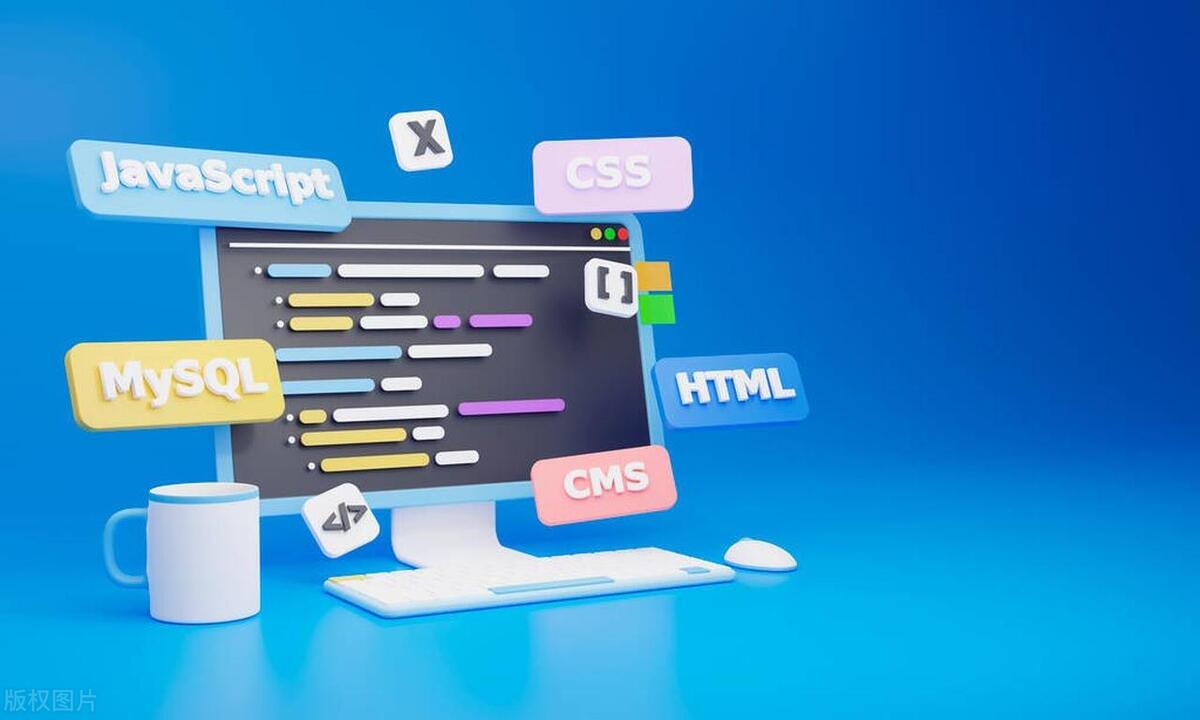The Web Animations API is a browser-native JavaScript animation control interface. 1. It allows developers to define keyframes and animation options through code to achieve dynamic and interactive animation effects; 2. Use the animate() method to create animations, and can achieve fine controls such as playback, pause, and acceleration through the returned Animation object; 3. Advantages include not relying on CSS or third-party libraries, supporting real-time response to user behavior, compatibility with modern browsers, but paying attention to the limitations of IE and Safari; 4. When using it, you should pay attention to performance optimization, avoid animation overlay, and implement animation callbacks through event monitoring.

The Web Animations API is a powerful but often underestimated tool in modern front-end development. It allows you to directly control animations with JavaScript without relying on CSS or third-party libraries. If you want to achieve more flexible and programmable animations in your web pages, the Web Animations API is a worthwhile choice.

What is the Web Animations API?
Simply put, it is a set of JavaScript interfaces natively supported by the browser for creating and controlling animations. You can use it to define keyframes, set animation duration, loop behavior, etc., all of which can be precisely controlled by code.
Compared with CSS animation, its advantage is that it can dynamically change animation properties, such as responding to user interactions or data changes in real time. It does not require writing keyframes in advance like CSS, nor does it have limited functionality like jQuery's animate method.

How to create a basic animation?
Creating an animation using the Web Animations API usually consists of two parts: defining keyframes and setting timing options.
const element = document.querySelector('.box');
const keyframes = [
{ transform: 'scale(1)', opacity: 1 },
{ transform: 'scale(1.5)', opacity: 0.5 },
{ transform: 'scale(1)', opacity: 1 }
];
const timingOptions = {
duration: 1000,
Iterations: Infinity
};
element.animate(keyframes, timingOptions);The above code will make an element constantly zoom in and out, achieving a simple breathing lamp effect. in:

-
keyframesdefine the state of each stage of the animation -
timingOptionscontrols the animation duration, whether it loops, etc. -
animate()is a method on Element to start animation
What makes this method more flexible than CSS animation is that you can modify these parameters at any time, and even dynamically generate new animations based on user operations.
Advanced animation control skills
Although animate() can quickly start animations, if you want to control the playback status more carefully, such as pausing, restoring, or adjusting the playback speed, you need to use the returned Animation object.
const animation = element.animate(keyframes, timingOptions); // Pause animation animation.pause(); // Resuming animation.play(); // Set playback rate (2 times the speed) animation.playbackRate = 2; // Reverse animation animation.reverse();
This is very useful in some interactive scenarios, such as:
- Accelerate animation when user hovers
- Pause and jump to a specific frame after clicking the button
- Dynamically adjust the animation progress according to the scroll position
In addition, you can also listen to animation events such as start, end, repeat, etc.:
animation.onfinish = () => {
console.log('Animation completed');
};Notes and compatibility
Although the Web Animations API has been widely supported in modern browsers, there are still some details to note:
- Compatibility handling : IE does not support it, Safari supports it with limited levels. If you need to be compatible with old browsers, it is recommended to add polyfill.
- Performance optimization : Try to avoid frequent calls
animate(), especially in scroll events, otherwise the page may be stuttered. - Animation overlay problem : multiple calls
animate()will create multiple animation instances, which may interfere with each other. The previous animation can be cleaned up throughanimation.cancel().
In addition, if you are already using CSS animation, you can also obtain all animation objects on the current page for unified management through document.timeline.getAnimations() .
Overall, the Web Animations API provides a clean and powerful way to directly control animations in JavaScript. It is not complicated, but is easily overlooked in actual projects. As long as you master the basic structure and control methods, you can replace traditional CSS animations or third-party libraries in many scenarios, bringing higher flexibility and control.
The above is the detailed content of Implementing Web Animations API. For more information, please follow other related articles on the PHP Chinese website!

Hot AI Tools

Undress AI Tool
Undress images for free

Undresser.AI Undress
AI-powered app for creating realistic nude photos

AI Clothes Remover
Online AI tool for removing clothes from photos.

Clothoff.io
AI clothes remover

Video Face Swap
Swap faces in any video effortlessly with our completely free AI face swap tool!

Hot Article

Hot Tools

Notepad++7.3.1
Easy-to-use and free code editor

SublimeText3 Chinese version
Chinese version, very easy to use

Zend Studio 13.0.1
Powerful PHP integrated development environment

Dreamweaver CS6
Visual web development tools

SublimeText3 Mac version
God-level code editing software (SublimeText3)
 How does React handle focus management and accessibility?
Jul 08, 2025 am 02:34 AM
How does React handle focus management and accessibility?
Jul 08, 2025 am 02:34 AM
React itself does not directly manage focus or accessibility, but provides tools to effectively deal with these issues. 1. Use Refs to programmatically manage focus, such as setting element focus through useRef; 2. Use ARIA attributes to improve accessibility, such as defining the structure and state of tab components; 3. Pay attention to keyboard navigation to ensure that the focus logic in components such as modal boxes is clear; 4. Try to use native HTML elements to reduce the workload and error risk of custom implementation; 5. React assists accessibility by controlling the DOM and adding ARIA attributes, but the correct use still depends on developers.
 Server-Side Rendering with Next.js Explained
Jul 23, 2025 am 01:39 AM
Server-Side Rendering with Next.js Explained
Jul 23, 2025 am 01:39 AM
Server-siderendering(SSR)inNext.jsgeneratesHTMLontheserverforeachrequest,improvingperformanceandSEO.1.SSRisidealfordynamiccontentthatchangesfrequently,suchasuserdashboards.2.ItusesgetServerSidePropstofetchdataperrequestandpassittothecomponent.3.UseSS
 A Deep Dive into WebAssembly (WASM) for Front-End Developers
Jul 27, 2025 am 12:32 AM
A Deep Dive into WebAssembly (WASM) for Front-End Developers
Jul 27, 2025 am 12:32 AM
WebAssembly(WASM)isagame-changerforfront-enddevelopersseekinghigh-performancewebapplications.1.WASMisabinaryinstructionformatthatrunsatnear-nativespeed,enablinglanguageslikeRust,C ,andGotoexecuteinthebrowser.2.ItcomplementsJavaScriptratherthanreplac
 How to manage component state using immutable updates in React?
Jul 10, 2025 pm 12:57 PM
How to manage component state using immutable updates in React?
Jul 10, 2025 pm 12:57 PM
Immutable updates are crucial in React because it ensures that state changes can be detected correctly, triggering component re-rendering and avoiding side effects. Directly modifying state, such as push or assignment, will cause React to be unable to detect changes. The correct way to do this is to create new objects instead of old objects, such as updating an array or object using the expand operator. For nested structures, you need to copy layer by layer and modify only the target part, such as using multiple expansion operators to deal with deep attributes. Common operations include updating array elements with maps, deleting elements with filters, adding elements with slices or expansion. Tool libraries such as Immer can simplify the process, allowing "seemingly" to modify the original state but generate new copies, but increase project complexity. Key tips include each
 Security Headers for Frontend Applications
Jul 18, 2025 am 03:30 AM
Security Headers for Frontend Applications
Jul 18, 2025 am 03:30 AM
Front-end applications should set security headers to improve security, including: 1. Configure basic security headers such as CSP to prevent XSS, X-Content-Type-Options to prevent MIME guessing, X-Frame-Options to prevent click hijacking, X-XSS-Protection to disable old filters, HSTS to force HTTPS; 2. CSP settings should avoid using unsafe-inline and unsafe-eval, use nonce or hash and enable reporting mode testing; 3. HTTPS-related headers include HSTS automatic upgrade request and Referrer-Policy to control Referer; 4. Other recommended headers such as Permis
 What are custom data attributes (data-*)?
Jul 10, 2025 pm 01:27 PM
What are custom data attributes (data-*)?
Jul 10, 2025 pm 01:27 PM
The data-* attribute is used in HTML to store additional data, and its advantages include that the data is closely related to elements and comply with HTML5 standards. 1. When using it, name it starts with data-, such as data-product-id; 2. It can be accessed through JavaScript's getAttribute or dataset; 3. Best practices include avoiding sensitive information, reasonable naming, paying attention to performance and not replacing state management.
 Applying CSS Styles to Scalable Vector Graphics (SVG)
Jul 10, 2025 am 11:47 AM
Applying CSS Styles to Scalable Vector Graphics (SVG)
Jul 10, 2025 am 11:47 AM
To style SVGs using CSS, you first need to embed SVGs inline into HTML for fine control. 1. Inline SVG allows its internal elements such as or to be directly selected through CSS and to apply styles, while external SVG only supports global styles such as width and height or filters. 2. Use regular CSS syntax such as .class:hover to achieve interactive effects, but use fill instead of color to control the color, and use stroke and stroke-width to control the outline. 3. Use class names to organize styles to avoid duplication and pay attention to naming conflicts and scope management. 4. The SVG style may be inherited from the page, and can be reset through svg*{fill:none;stroke:none;} to avoid
 How to add a favicon to a website?
Jul 09, 2025 am 02:21 AM
How to add a favicon to a website?
Jul 09, 2025 am 02:21 AM
Adding website Favicon requires preparing icon files, placing the correct path and quoting them. 1. Prepare multi-size .ico or .png icons, which can be generated by online tools; 2. Put favicon.ico in the website root directory; 3. If you need to customize the path or support more devices, you need to add a link tag reference in the HTMLhead; 4. Clear the cache or use the tool to check whether it is effective.






